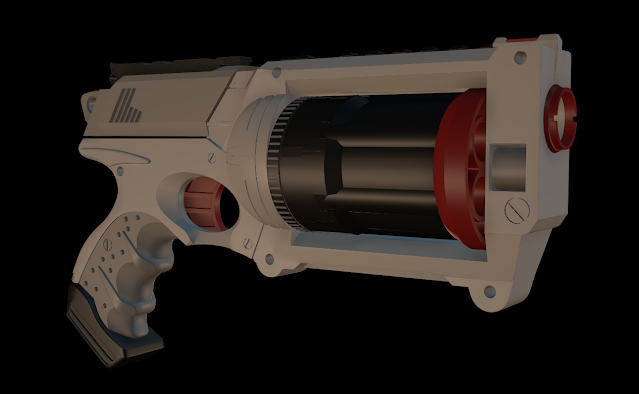Delivery 3 - VR Video UE4 Notes
Jacob Stone - Common
VR notes from Robo Recall
One of the most impressive things I
learned from the Unreal video is that you can use a shader in your environments
to create the impression of 3D reality. As you move side to side or rotate your
vision in the Oculus, the illusion of a dimensional space with depth like a 3D
cube can be placed on a single plane, thus freeing up processing power. The
shader creates the visual effect instead of having actual 3D vert modelling
which would make the project run slower.
I also learned a ton about shape
language and detail in terms of what as a 3D artist I need to be thinking about
when making models. The robot examples showed that you need to be aware of how
the person playing the VR game will see in terms of perspective. Each of the
robots are different sizes so that they are easily distinguishable. There was a
robot designed for speed but shorter than a human, so most of the detail area
is what is closest to the VR player eyes. The top of the robot has more
interesting detail and design whereas the bottom half of the robot will be less
interesting because the player will not be seeing that part of the robot as
much as the top side. The inverse is true of the giant big bot, the top of it
was very boxy and solid planes but the mid-section of the robot has more detail
because that is at the eye level of the player.
Another important distinction made
within the VR game that I found insightful is the idea that players who are
shooting or killing some enemy within the game prefer that it does not look or
feel too human. It turns out even if the enemy is a robot but it has human-like
qualities people will not want to play the game or kill as many enemies because
they feel bad about doing the action. The VR team was able to get around this
issue by making sure the robots felt like robots and added more sinister
qualities to enhance the face for instance and keep it feeling as maybe more of
an unconscious systematic type killer that way you will not feel bad for
slaying these aggressive animatronic atrocities.
It was interesting to learn how
they create highly accurate prototype meshes before they get to the high mesh
creation. It is sort of like creating the game res model before doing the high
res, which is the process I experimented with on my Nerf Gun and have found
this type of workflow works best for me because as I’m constructing the proxy
my mind is already seeing how I am going to create the kind of topology I will
need and how the UVs will layout. This method also allows the animators and
designers to have the prototype model in the VR experience sooner so they can
immediately see what is and is not working in engine. By getting the game res
or prototype model in engine right away the higher res detail that takes time
to create can take place after the model is already functioning for the rest of
the team.
My
favorite takeaway from the video is easily the concept that the 3D artists used
real reference for how they constructed the world. It is in my goal as a 3D
artists to approach realism and to be able to work in film in the industry. The
way the VR experience was constructed utilized existing architecture to enable
the artists to work closely with scale and create accurate representations
within the VR world is something I am passionate about. I enjoyed watching this
video because it shows how up and coming VR experiences are not only similar to
real world gaming experiences but as an artist this is an exciting field to be
entering at this time.

































